Namaste: Respect Overcomes Pride, a Universal Greeting, and a Sign of Reverence
To many Buddhists, “Namaste” is more than a commonly spoken greeting. It is not just a salutation, it’s a sign of genuine respect and good will. More importantly, bowing to another helps us overcome the obstacle of pride, a major obstacle to Buddhist practice. The mudra Anjali, which is associated with “Namaste”—the hands clasped in front of the heart, fingers pressed (see below)—is ubiquitous to nearly all schools of Buddhism, and has it’s root in Hindu practice, and the greeting “Namaste.”
(Please note, a counter-point feature in Buddha Weekly, Anjali Mudra is a Universal Buddhist Greeting —— Not “Namaste”, is found here>>)

Used Everywhere: Not Just a Spiritual Greeting
Namaste is not a Buddhist-specific greeting, and it has its origins in Hindu practice. In India it is an polite greeting. In Buddhism, it is typically a sign of great respect when used together with the hands pressed in front of the heart, symbolic of the bow.
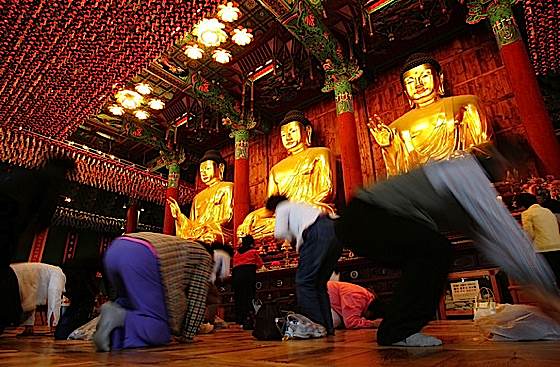
Variations on the spoken greeting is Namaskar, Namaskaram or Vanakkam. Yet, many Buddhists, regardless of their home language, use “Namaste” as their standard greeting—not because of cultural roots, but due to the many layers of meaning behind the simple word. It means much more than “Hi” or even “Bless you”, and literally could be translated as “I bow to you.” Actually, it implies, “I bow to the Divine in you” as both Hindu and Buddhist traditions teach that all beings have Divine (or Buddha Nature, as it’s called in Buddhism). From India, the greeting expanded to many parts of Asia—and in a spiritual context, particularly in Buddhism—around the world. Namaste replaces “hello” as greeting where deep respect is offered.
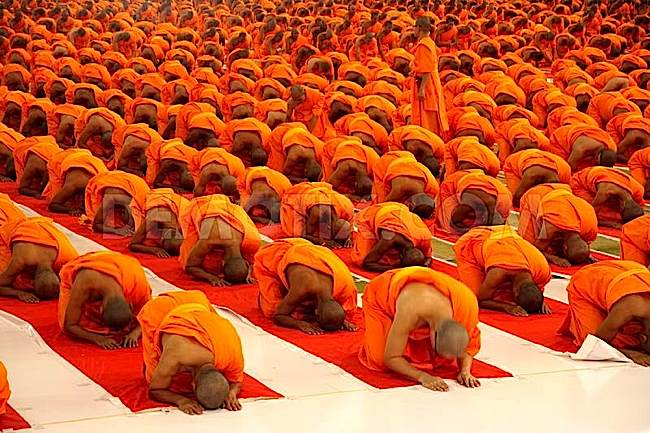
Namaste is used as both a spoken and written greeting for welcoming guests, relatives, strangers. It is also a parting good-bye. In the Buddhist context, when spoken, it is nearly always accompanied by a bow, usually with hands pressed together in front of the chest. For those who practice with Mudras, this is known as Anjali. If Anjali mudra is performed without words — for example, a greeting at a distance — the word “Namaste” is conveyed regardless.
Namaste is Sanskrit: Not Just a Word, but Stimulates Recall
Of course, Namaste is rooted in Sanskrit, the mother of languages, a language much older than even Latin. The word Namaste is the combination of “namah” — to bow — and “te” — to you. Namaste literally means “bow to you.”
In some traditions, rooted in Hinduism, which carries over to Buddhism, the Anjali mudra used for Namaste is said to activate pressure points — think in terms of Acupuncture — which activate the pressure points in eyes, ear, mind. To press them together activates these pressure points, helping us to remember the person we are greeting: their face (eyes), name (ears) and personality (mind).
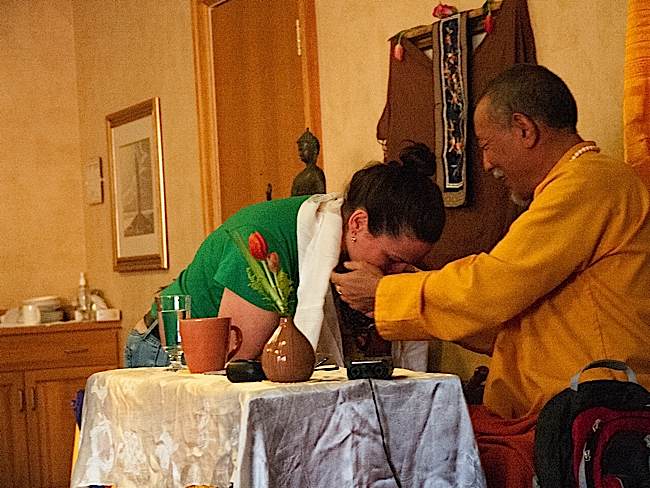
In Buddhism, to Bow is a “Cure”
Buddhists typically bow as a cure for negative attachment to ego and vanity, which binds one to samsara. Often, non-Buddhists see the action of bowing as “worship”. However, to bow to an elder, friend, guru, statue of the Buddha, or even a stranger is a sign of respect rather than devotion. The bow of respect contributes tangibly to the path away from attachment. The attachment to ego is literally crushed. And, it’s polite!
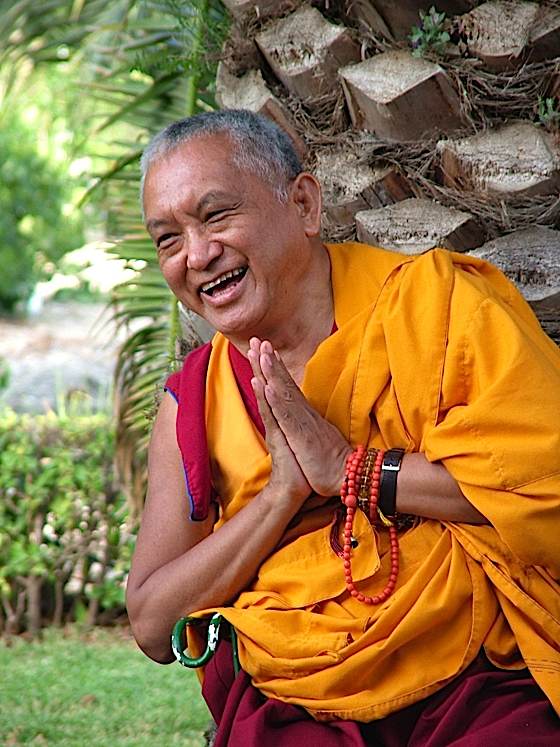
How low we bow is generally an indication of our degree of respect. To a Buddha statue or relic (or representation of the three Jewels), we might do full body prostrations, fully prone, and multiple times (usually a minimum of three.) To a guru, we might hold our hands higher and bow lower (or do full prostration) as a sign of reverence to the teacher and the dharma teachings he brings. To an elder, we might bow a little lower than to a good friend. To parents, in some parts of Asia, such as Korea, it is often traditional to fully bow to the floor when formally greeting parents or in-laws during special occasions such as engagements, weddings, and death anniversaries. The key, however, is we are helping ourselves by subduing our ego — while at the same time being polite and respectful.
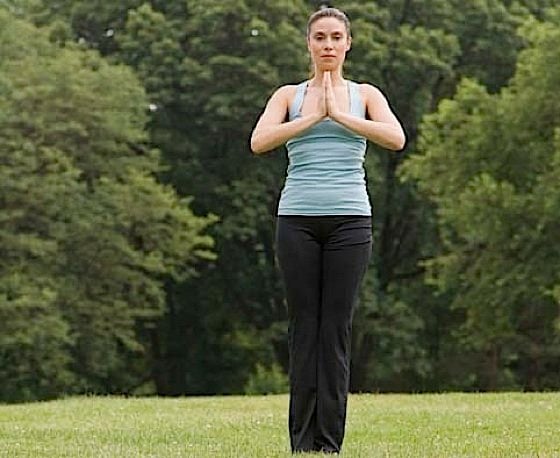
Even in Business we “Namaste”
Major airlines, service industries, waiters, salespeople, VPs and presidents of companies use “Namaste” to greet their customers—out of an abundance of respect and thanks.
In a more “spiritual” sense, “Namaste” is also non-verbally saying “I honor the place you occupy in the Universe. I honor you with love, wisdom and peace.”
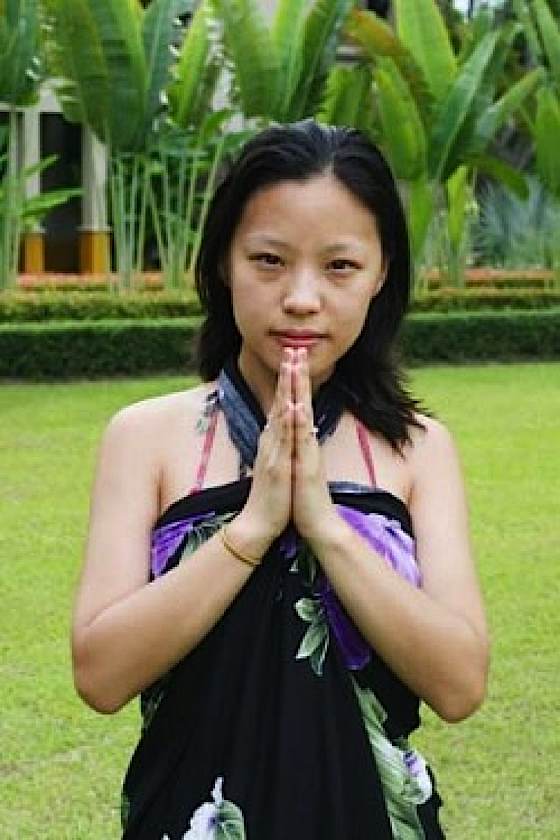
A Guest Contributor makes the counter point that Anjali Mudra (the hand gesture) and a greeting is the proper form, not the word “Namaste”:
18 thoughts on “Namaste: Respect Overcomes Pride, a Universal Greeting, and a Sign of Reverence”
Leave a Comment
More articles by this author
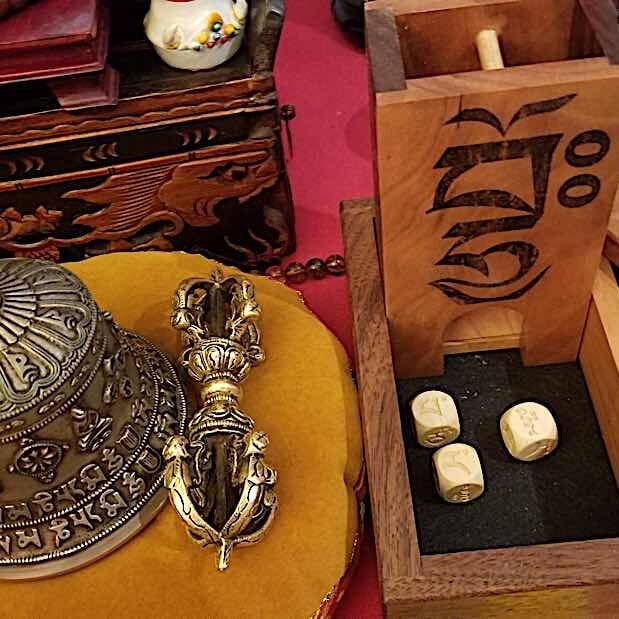
Mo Dice and Mo Mala, Bamboo Sticks, and other “divinations” — “Mo could prove beneficial…” HH Sakya Trizin
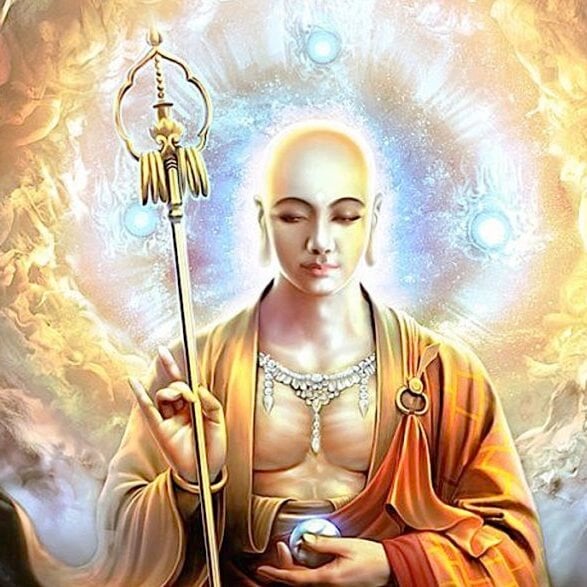
Lama Zopa Rinpoche and other teachers recommend Kṣitigarbha mantra and practice for times of disaster, especially hurricane and earthquake, because of the great Bodhisattva’s vow

“Torches That Help Light My Path”: Thich Nhat Hanh’s Translation of the Sutra on the Eight Realizations of the Great Beings
Search
Latest Features
Please support the "Spread the Dharma" mission as one of our heroic Dharma Supporting Members, or with a one-time donation.
Please Help Support the “Spread the Dharma” Mission!
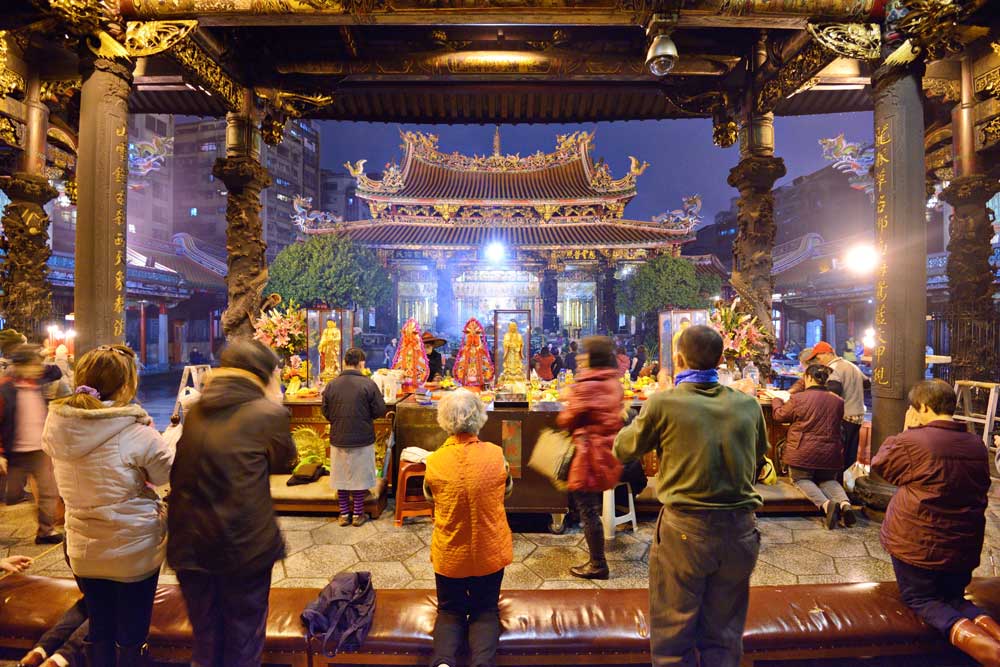
Be a part of the noble mission as a supporting member or a patron, or a volunteer contributor of content.
The power of Dharma to help sentient beings, in part, lies in ensuring access to Buddha’s precious Dharma — the mission of Buddha Weekly. We can’t do it without you!
A non-profit association since 2007, Buddha Weekly published many feature articles, videos, and, podcasts. Please consider supporting the mission to preserve and “Spread the Dharma." Your support as either a patron or a supporting member helps defray the high costs of producing quality Dharma content. Thank you! Learn more here, or become one of our super karma heroes on Patreon.
Josephine Nolan
Author | Buddha Weekly
Josephine Nolan is an editor and contributing feature writer for several online publications, including EDI Weekly and Buddha Weekly.
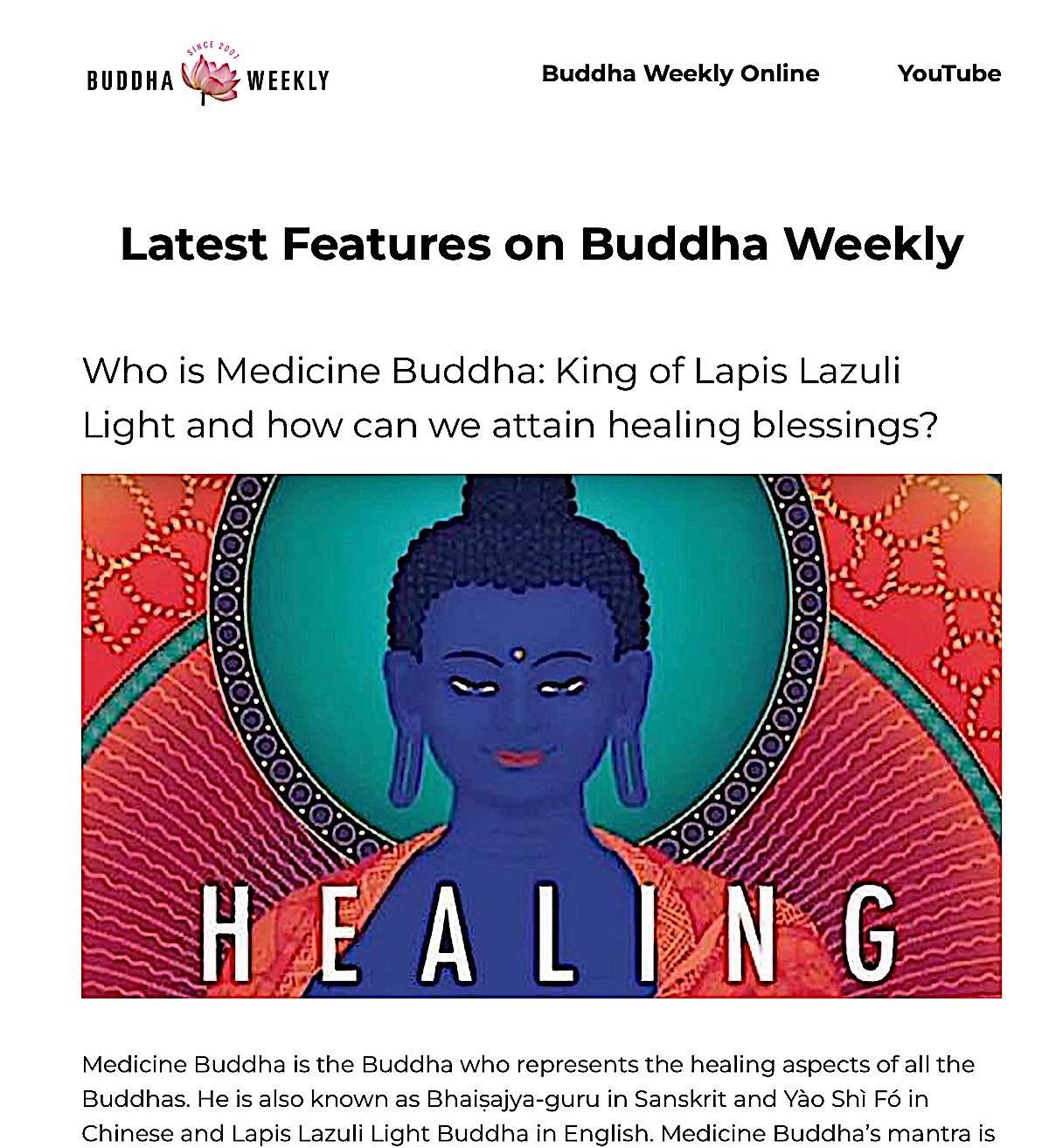
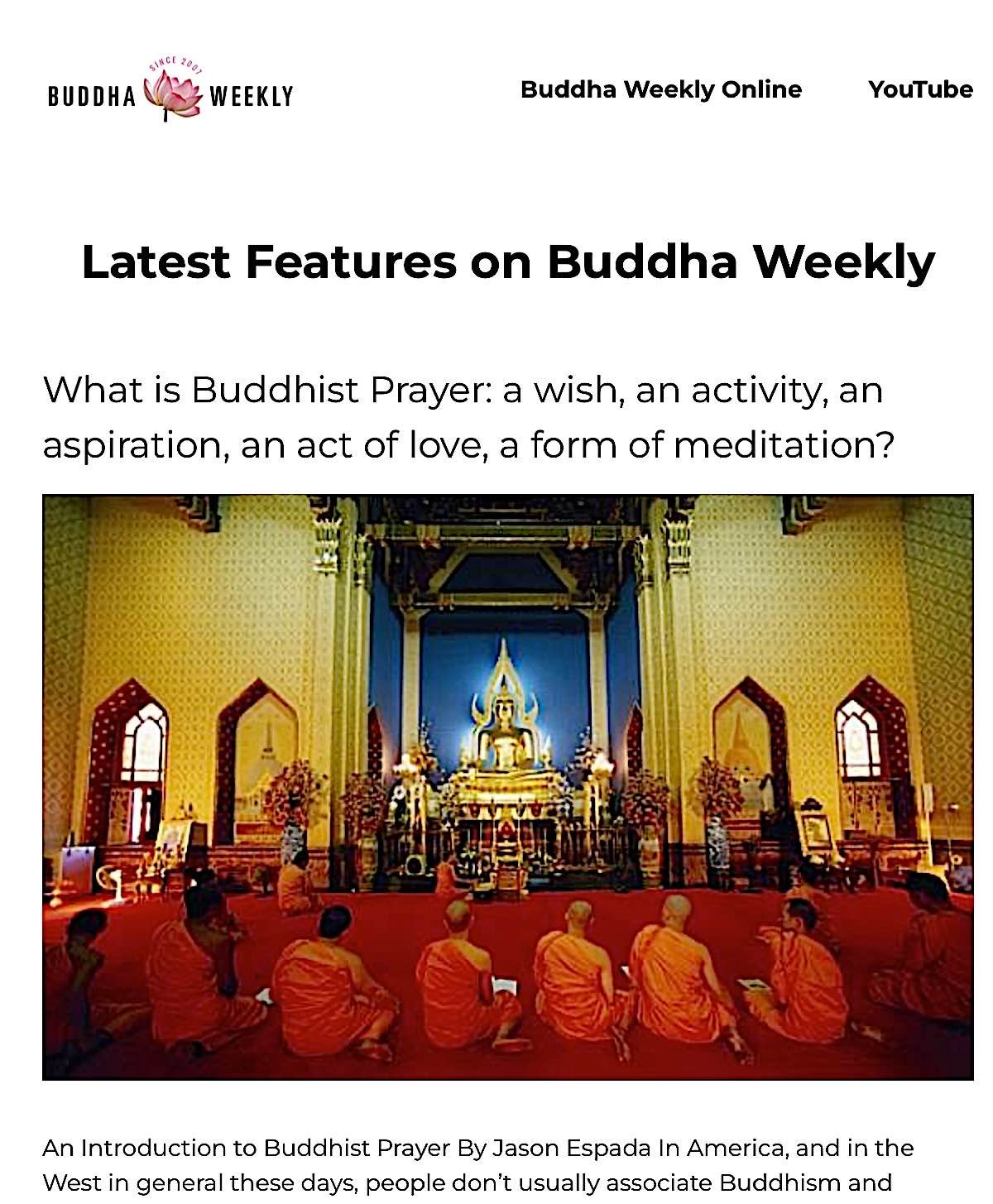




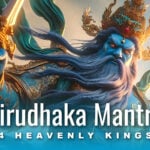
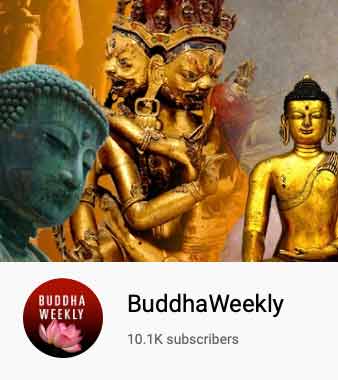




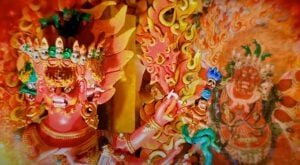

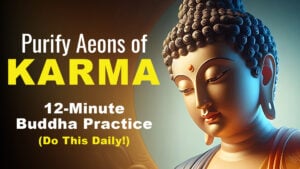

Namaste!
I love and wish for all the same always and forever
Always wanted to know what this means because my yoga teacher always said it
Namaste is not a Buddhist greeting.
Namaste is a Hindi-language greeting used by Hindus in India. It is not used outside of Indian communities. ‘Namaste’ etymologically just means ‘bow to you’; words like ‘honor’, ‘universe’, ‘cosmos’, and ‘the divine’ are often added to flesh out a pretty cosmic phrase that is absent in the original. (Comparatively, ‘hi’ is etymologically related to ‘heil’ in German or ‘salve’ (> salute) in Latin, with the gesture of a single hand raised to the other person. Nothing cosmic here, just a gesture of greeting.)
In Southeast Asia, a traditional gesture of two hands in prayer, called a ‘wai’ in Thailand, is offered; however, ‘namaste’ is not used. Buddhists in East Asian countries, such as China, will also use a ‘wai’-like greeting, but they do not say ‘namaste’. Nor do they use ‘namaste’ in Japan, Korea, Taiwan, etc, or any other Buddhist country.
Namaste has spread among western Buddhists because of the influence of yoga classes, where Hindu terminology and vocabulary are used.
But it’s Hindu, NOT Buddhist.
Thank you! It’s not really meant to be a discussion of origin (even though the story preambles with “But, where did the word originate, and how did it become so ubiquitous?”) It’s really meant to be a discussion of how and why it’s used, in this case, by Buddhists. But you’re right, the article could be viewed as a discussion on origins because of that opening paragraph—which we’re going to amend. We happily stand corrected:) The modern use, whatever the origins, however, is still a beautiful tradition used by many Buddhists, and it’s certainly a practice of respect that should be encouraged by everyone.
The origin of the word ” Namaste’ ” is not the intent of this article . But since you deem it important to put a seperation between Hinduism & Buddhism , I think it should be taken into consideration that the foundation of Buddhism would not be possible without the major influence Hinduism contributed into the Buddhist’s spiritual journey . Sidharthar ( aka Buddha ) was in fact a Hindu prince . It wasn’t until he left his life of royalty & affluence to seek the true meaning of life that Buddhism came to be . He knew there was more to our existance than what his royal family was allowing him to see . It is through his eyes & journey that Buddhism became a spiritual awakening . Upon reaching ” Enlightenment ” did the former Hindu Prince finally reach his achievement & ” BUDDHA ” ( the enlightened one ) became what he was meant to be . Without his Hindu influence Buddhism would not be . Therefore it is important to honor them both . Namaste’
We couldn’t agree with you more. Thank you again. Namaste!
At least, here in the West, a common greeting among practitioners of the Buddha Dharma wouldbe, not only convenient, but unifying. Debates on the correct form would have the opposite effect.
Noting that The Buddha achieved Enlightenment and taught the Dharma within the context of Hindu culture, we can conjecture that he and his followers used or were, at least, familiar with the form “Namaste,” or however it appeared at the time.
In other words, good enough for the Tathagatha, good enough for me.
Namaste, y’all!
Not necessarily, as then all the evidence in this article would be pointless and a bit Wikipedia-ish and I have met a shaulain monk before and I greeted him with’namaste’ and bowed and he respected me for it
Of course he respected you, that’s the buddhist practice.
The article has been updated by buddhaweekly.com. In the end of the article you can read:
“A Guest Contributor makes the counter point that Anjali Mudra (the hand gesture) and a greeting is the proper form, not the word “Namaste”:”
Follow that link for more info.
“Namaste” is the derivation of words “namah” and “te.” The word “te” means “to you.” As such, “namaste” means “I salute or bow to you with respect.”
“Namaskar” is the combination of words “namah and “kar.” The word “kar,” which has been derived from the verb “kri” means “to do.” As such, “namaskar” means, “I do the act of saluting or bowing with respect.”.
So that means, Namaskar is a “better” word to say, because it have a more bigger field of respect.
Perhaps the most important thing (to remember, to know or to practice) about using Namaste as an honor and/or greeting is to use it with sincerity and an open heart. The rest will follow and I trust, be well received.
Pingback: The Spirit: Namaste, Better than a Thousand Hollow Words - The Soul Beneath
I like this one for a formal greeting.
In slow motion with clear focus;
Form the hands in front of the heart, with a slight bow, look into the eyes of the recipient and if they are comfortable with it, place your forehead slowly against theirs.
No words are spoken and the form is held for a time to allow for connection to the other.
As you now can read in the end of article and as another person mentioned, Namaste belongs to the Hindu tradition, and not the buddhist.
I myself am a practioner within the chinese Chan Buddhismen (ZEN) with a teacher fromof one of the mainland temples in china. In Chan Buddhism the phrase “Namo amitoufo” or “Namo Amitabha Buddha” is used as a greeting. It meanse homage to the Amitabha Buddha, and the name “Amitabha” means boundless light and infinite life.
Of course buddhism teach non-attachment and you can use any greeting as you like. But there is a risk that an buddhist from asia is not familiar with the word “namaste” and it’s meaning. A simple bow is enough.
Namo amitoufo
In Singapore, the Mahayana Buddhist greet each other with Amitoufo with the Anjali Mudra (sometimes without).
Very informative and balanced
I want to address the Buddhist concept of “essential practices”. The only “essential practice” of Buddhism is that there are no “essential practices” of Buddhism.
While we have not been properly introduced, you will come to understand that i am the Sanat Kumara, and the embodiment of Narada.
I am the Maitreya.
Namaste
jeffery
NAMASTE
Informative and useful post. Really nice.
I agree with you.
Thanks & keep it up.
Respect for you.
Regards,
Jessica G. Albaston